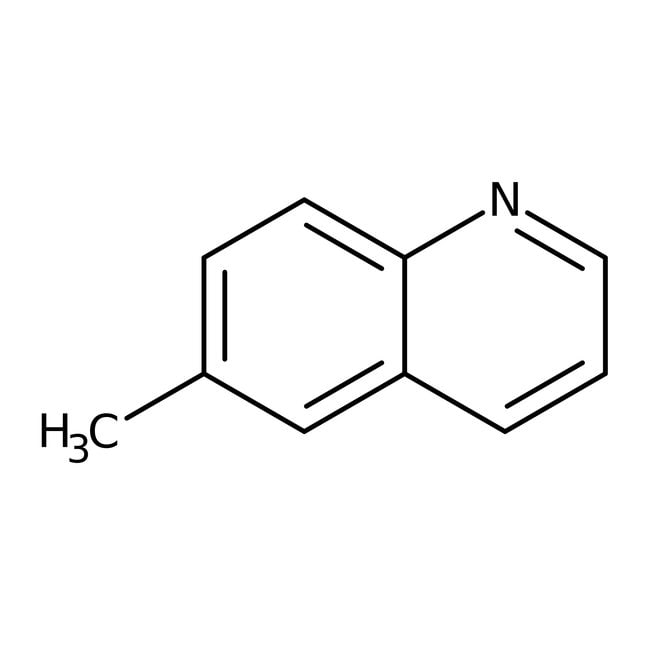Search Thermo Fisher Scientific
Thermo Scientific Chemicals
6-Methylquinoline, 98%, Thermo Scientific Chemicals
Catalog number B21892.06
also known as B21892-06
Price (USD)/ Each
23.70
-
Quantity:
5 g
Price (USD)/ Each
23.70
6-Methylquinoline, 98%, Thermo Scientific Chemicals
Catalog numberB21892.06
Price (USD)/ Each
23.70
-
Chemical Identifiers
CAS91-62-3
Specifications Specification Sheet
Specification Sheet
Appearance (Color)Clear colorless to yellow to pale brown
FormLiquid
Assay (GC)≥97.5%
Refractive Index1.6120-1.6160 @ 20?C
6-Methylquinoline can be used as primary carbon source in culture of Pseudomonas putida QP1. 6-Methylquinoline was used in the synthesis of fluorescent halide-sensitive quinolinium dyes and fluorescent probes for determination of chloride in biological systems.
This Thermo Scientific Chemicals brand product was originally part of the Alfa Aesar product portfolio. Some documentation and label information may refer to the legacy brand. The original Alfa Aesar product / item code or SKU reference has not changed as a part of the brand transition to Thermo Scientific Chemicals.
Applications
6-Methylquinoline can be used as primary carbon source in culture of Pseudomonas putida QP1. 6-Methylquinoline was used in the synthesis of fluorescent halide-sensitive quinolinium dyes and fluorescent probes for determination of chloride in biological systems.
Solubility
Not miscible or difficult to mix with water.
Notes
Light Sensitive, store in dark. Store in cool place. Keep container tightly closed in a dry and well-ventilated place. Store away from oxidizing agent.
6-Methylquinoline can be used as primary carbon source in culture of Pseudomonas putida QP1. 6-Methylquinoline was used in the synthesis of fluorescent halide-sensitive quinolinium dyes and fluorescent probes for determination of chloride in biological systems.
Solubility
Not miscible or difficult to mix with water.
Notes
Light Sensitive, store in dark. Store in cool place. Keep container tightly closed in a dry and well-ventilated place. Store away from oxidizing agent.
RUO – Research Use Only
General References:
- S Rothenburger; and R M Atlas. Hydroxylation and biodegradation of 6-methylquinoline by pseudomonads in aqueous and nonaqueous immobilized-cell bioreactors. Applied and Environmental Microbiology., 1993, 59 (7), 2139-2144.
- C D Geddes et. al. Chloride-sensitive fluorescent indicators. Analytical Biochemistry, 2001, 293 (1), 60-66 .

